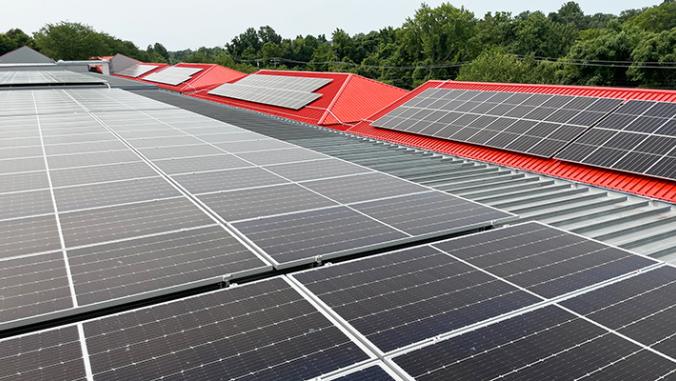On Oct. 19, a congressional subcommittee heard testimony about the role artificial intelligence could play across the energy industry — from the discovery of new generation sources to better predictions for electricity demand. The tone was generally optimistic.
Using AI, "utilities will be able to utilize its benefits for maintaining or improving safety, affordability, efficiency and environmentally friendly energy production," said Jeremy Renshaw, senior technical executive for AI, quantum and nuclear innovation at the Electric Power Research Institute.
The fascination with AI in the corporate sustainability community was also evidenced by the standing-room-only audience during a three-hour-long AI and decarbonization tutorial at VERGE 23 last week. Among the potential use cases discussed:
- Optimization of building operations and industrial processes
- Improved weather analytics and energy demand predictions
- Sharper insights for prioritizing logistics and fleet transitions
- Accelerated research and product design
The speakers cautioned, however, that several "preconditions" should be in place before embarking on AI projects — including the operational health of the targeted systems, regardless whether integral equipment is connected to the internet, and how facilities teams will be incentivized to deliver on carbon reduction targets.
"If people aren't being recognized and supported for this, if you don't have targets for it, then it's not something that you're going to be able to make effective progress on," said Andrew Knueppel, workplace engineering manager for real estate services firm Cushman & Wakefield.
Here are four considerations for companies evaluating AI projects as part of their corporate sustainability efforts:
1. Automation isn’t a panacea
Companies seeking to deploy AI for building management applications should focus first on ensuring that existing lighting, and heating, ventilation and air-conditioning (HVAC) systems are operating efficiently, said Knueppel.
"If you’ve got stuck valves or dampers in your building, you have uncalibrated sensors, AI is not going to fix that for you," he said. "It’s going to basically take in that bad data and give you bad outputs. If you have congested networks that the AI can’t read, if you have isolated systems or proprietary protocols, you’ll basically be stuck and you won’t be able to get that data out, in order to use it for any application."
2. Quality trumps quantity when it comes to data
Charles Tripp, senior scientist for AI at the National Renewable Energy Laboratory, underscored the importance of choosing data used for AI applications carefully. It’s not only a matter of screening for potential bias, but also of choosing the most robust metrics for the models, he said.
"If you need more data, how much does it cost to collect that data? Or do you get it from a third party that might have generated it? If you’re generating it synthetically, are there privacy issues involved, or, you know, contractual issues involved with getting that data and using it for certain purposes?"
3. Using AI can boost energy consumption
Close to 70 percent of corporate chief information officers surveyed by Intel are concerned about the energy consumption associated with deploying AI within their organizations, said Jennifer Huffstetler, chief product sustainability officer at Intel. That’s particularly true of training generative AI applications, such as ChatGPT, which can require thousands of megawatt-hours of computing time, she said.
That makes it imperative for sustainability teams to collaborate closely with their corporate IT departments in the planning phase. Underscoring Tripp’s remarks, Huffstetler said there are three pillars to consider for deploying AI sustainably:
- Optimizing the efficiency of the software algorithms and the hardware they run on
- Running the computing workloads on grids powered by renewable energy
- Using only data that’s necessary for the model
4. Leaving humans out of decision-making is a mistake
Companies should ensure that facilities teams and building occupants understand the algorithms machine learning systems use in order to intervene as appropriate, said Cushman & Wakefield’s Knueppel. That means starting small and monitoring results closely to verify their accuracy.
He offered the example of an AI application that falsely predicts the need for maintenance on a fan or piece of equipment. "If you’re using the AI for building control, so everything in the building is being actively manipulated by the AI, and you’re getting complaints in the building, which will always happen, you’ll never be able to get rid of those if you put operators in the position where they don’t understand why the building is doing what it’s doing," Knueppel said.
Transparency, in other words, is key.
Is your organization using AI for decarbonization? If so, email case study ideas to [email protected].






